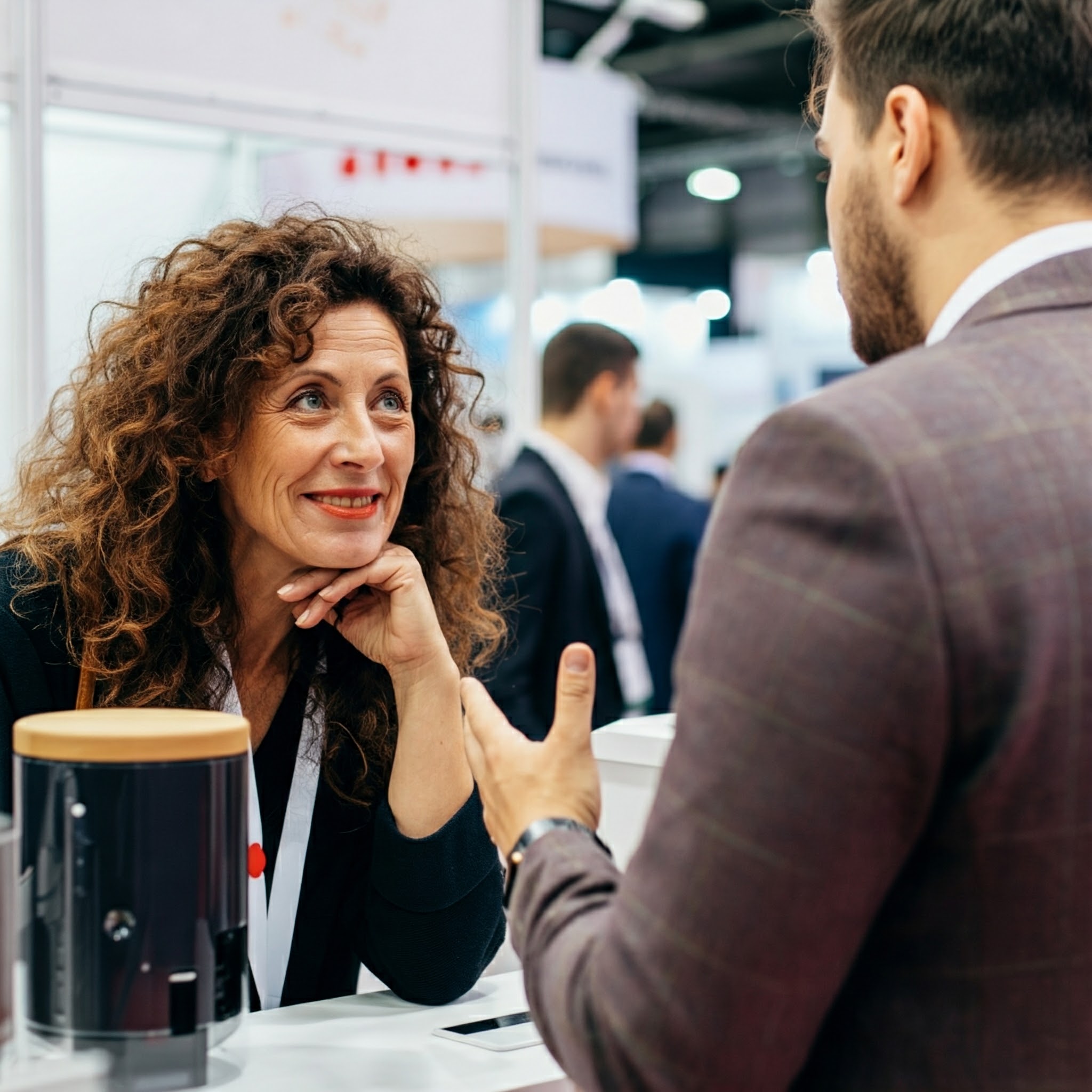The very word “exhibition” implies a showcase, a presentation. Traditionally, B2B exhibitions were a platform to demonstrate your products, technology, and services – to talk, to explain, to persuade. But in today’s hyper-connected and hyper-noisy world, the game has changed.
Serious buyers, those who are advanced in their decision funnel, arrive armed with information. They don’t just land up. More often than not, they’ve done their research, compared alternatives, and formed preliminary opinions before even stepping foot in the exhibition hall. This shift presents a unique challenge and opportunity for exhibitors. While showcasing your offerings remains important, the true value of B2B exhibitions now lies in the art of listening.
The Shift: From Showcasing to Understanding
Think of your exhibition booth not just as a stage for your products, but as a hub for listening and gathering crucial insights. So what if instead of launching into a pre-rehearsed sales pitch, you prioritize understanding your prospect’s needs? What are their pain points? What solutions are they seeking? What are their priorities and expectations? What, if any, experiences have they had with your competitors?
By actively listening, you gain a competitive edge. You can:
- Tailor Your Message: Address their specific needs and demonstrate how your product provides targeted solutions.
- Build Trust and Rapport: Show genuine interest in their challenges and foster a connection that extends beyond the exhibition floor.
- Identify Qualified Leads: Focus your efforts on prospects who are genuinely interested and have a higher potential for conversion.
The Power of Listening: Creating a Path Forward
The goal of a B2B exhibition is rarely to close a deal on the spot. It’s about initiating a relationship, sparking interest, and laying the groundwork for future engagement. By actively listening, you create a reason to move forward after the expo.
This could involve:
- Scheduling a follow-up meeting: “I’d love to discuss your specific requirements in more detail. Would you be available for a call next week?”
- Offering a personalized demo: “Based on what you’ve shared, I think you’d be particularly interested in seeing how [feature] can address [challenge]. Let’s schedule a personalized demo.”
- Providing valuable resources: “I have a case study that highlights how we helped a similar company achieve [result]. I’ll be sure to send it to you.”
Finding the Balance: Talking and Listening in Harmony
Of course, you shouldn’t remain completely silent. Talking about your products and services is still essential, but it should be done strategically and in response to the prospect’s needs.
Think of it as a jugalbandi* or a Jazz performance or a dance: you lead with a question, they respond, you listen attentively, and then you offer relevant information or insights. This creates a dynamic and engaging conversation that fosters trust and encourages further interaction.
In Conclusion: The New Exhibition Mantra
In today’s noisy marketplace, listening is the new selling. By prioritizing active listening at your next B2B exhibition, you’ll not only gather valuable insights but also forge stronger connections with potential clients. Remember, it’s not just about showcasing your products; it’s about understanding your audience and creating a path forward together.

